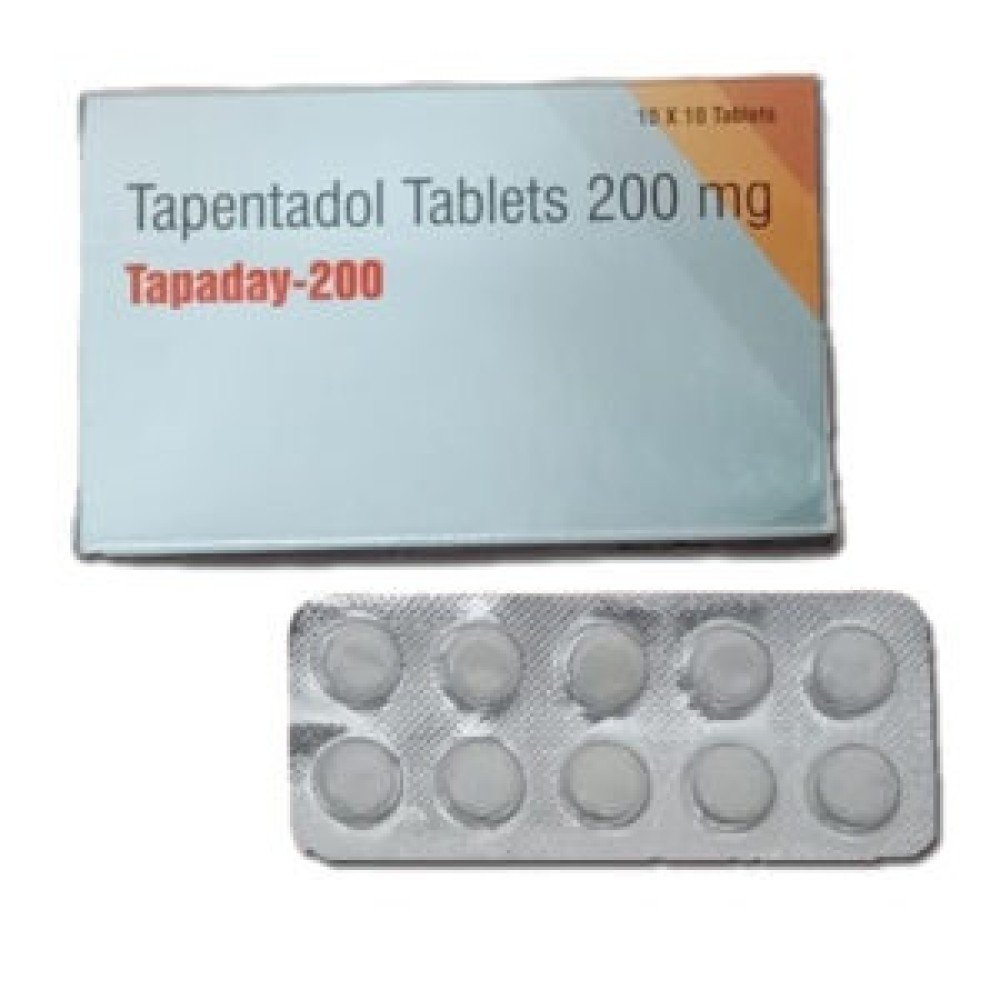Pain relief is essential for improving quality of life, especially when dealing with chronic or acute pain. One medication that has gained attention for its effectiveness is Tapaday. But how does Tapaday 200 work to relieve pain? In this blog post, we will delve into its mechanism of action, how it helps manage pain, and the science behind its effectiveness.
What is Tapaday 200?
Tapaday 200 is a brand name for a formulation that contains Tapentadol, a powerful pain reliever. Tapentadol is classified as a centrally acting analgesic, which means it works primarily in the brain and spinal cord to alleviate pain. This medication is commonly prescribed for moderate to severe pain, including conditions like neuropathic pain, post-surgical pain, and musculoskeletal pain.
Mechanism of Action of Tapaday 200
Tapaday 200, or Tapentadol, combines two distinct mechanisms of action that make it highly effective for pain relief:
- Mu-Opioid Receptor Agonism
Tapentadol works in a similar way to opioids by binding to the mu-opioid receptors in the brain and spinal cord. These receptors are responsible for modulating pain signals. By activating these receptors, Tapentadol reduces the sensation of pain and provides relief to the user. However, Tapentadol is unique because it has a lower risk of addiction and side effects compared to traditional opioids. - Norepinephrine Reuptake Inhibition
In addition to its opioid-like effects, Tapentadol also inhibits the reuptake of norepinephrine, a neurotransmitter involved in pain transmission. By increasing the levels of norepinephrine in the spinal cord, Tapentadol enhances the body’s natural ability to control pain. This dual action makes Tapaday 200 an effective option for a variety of pain types, including nerve pain and pain from injuries or surgeries.
Pain Relief in Different Pain Types
The combination of opioid receptor activation and norepinephrine reuptake inhibition makes Tapaday 200 versatile in treating different types of pain, including:
- Neuropathic Pain: Caused by nerve damage, neuropathic pain can be particularly difficult to manage. Tapaday 200’s ability to enhance norepinephrine activity is especially effective in treating this kind of pain.
- Acute Pain: Whether from surgery, injury, or other causes, Tapaday provides rapid relief for short-term pain by acting on both the opioid receptors and the norepinephrine pathways.
- Chronic Pain: For long-term conditions, Tapaday 200 can offer sustained pain relief by addressing pain at both the peripheral and central levels of the nervous system.
Benefits of Tapaday 200
The key advantages of Tapaday tablet over traditional opioids include:
- Lower Risk of Abuse: Tapentadol has a reduced potential for abuse compared to other opioids, which makes it a safer option for many patients.
- Dual Action: Its unique dual mechanism of action—opioid receptor agonism and norepinephrine reuptake inhibition—ensures a broader scope of pain relief, especially for conditions like neuropathic pain.
- Minimal Side Effects: While Tapaday 200 can still cause side effects like nausea, dizziness, or constipation, these tend to be less severe compared to stronger opioids.
Conclusion
Tapaday 200 is an effective medication for managing moderate to severe pain, thanks to its dual mechanism of action. By activating opioid receptors and inhibiting norepinephrine reuptake, it provides a comprehensive approach to pain relief. If you suffer from pain that is difficult to manage with other medications, Tapaday 100 could be a solution worth discussing with your healthcare provider.


